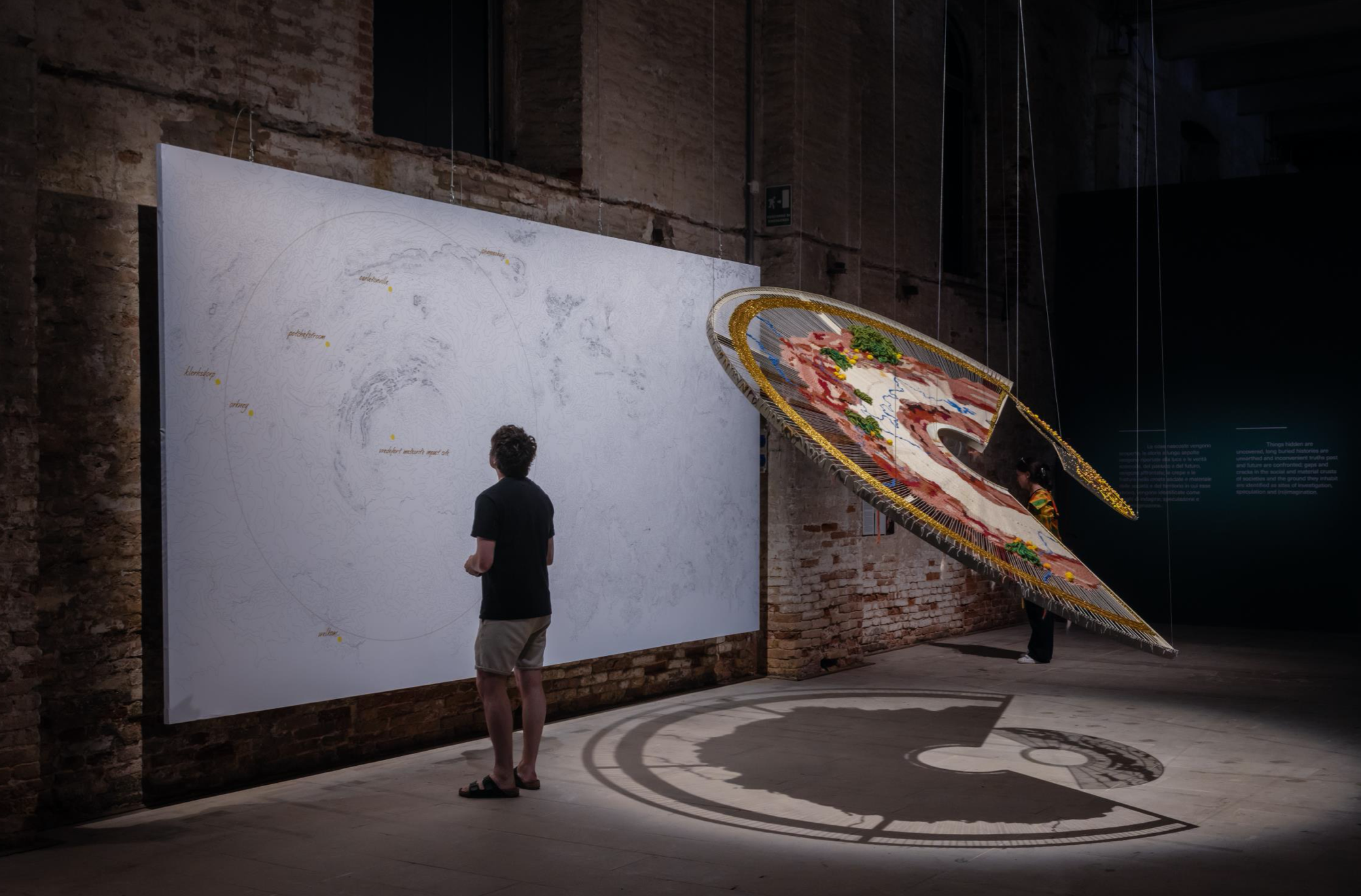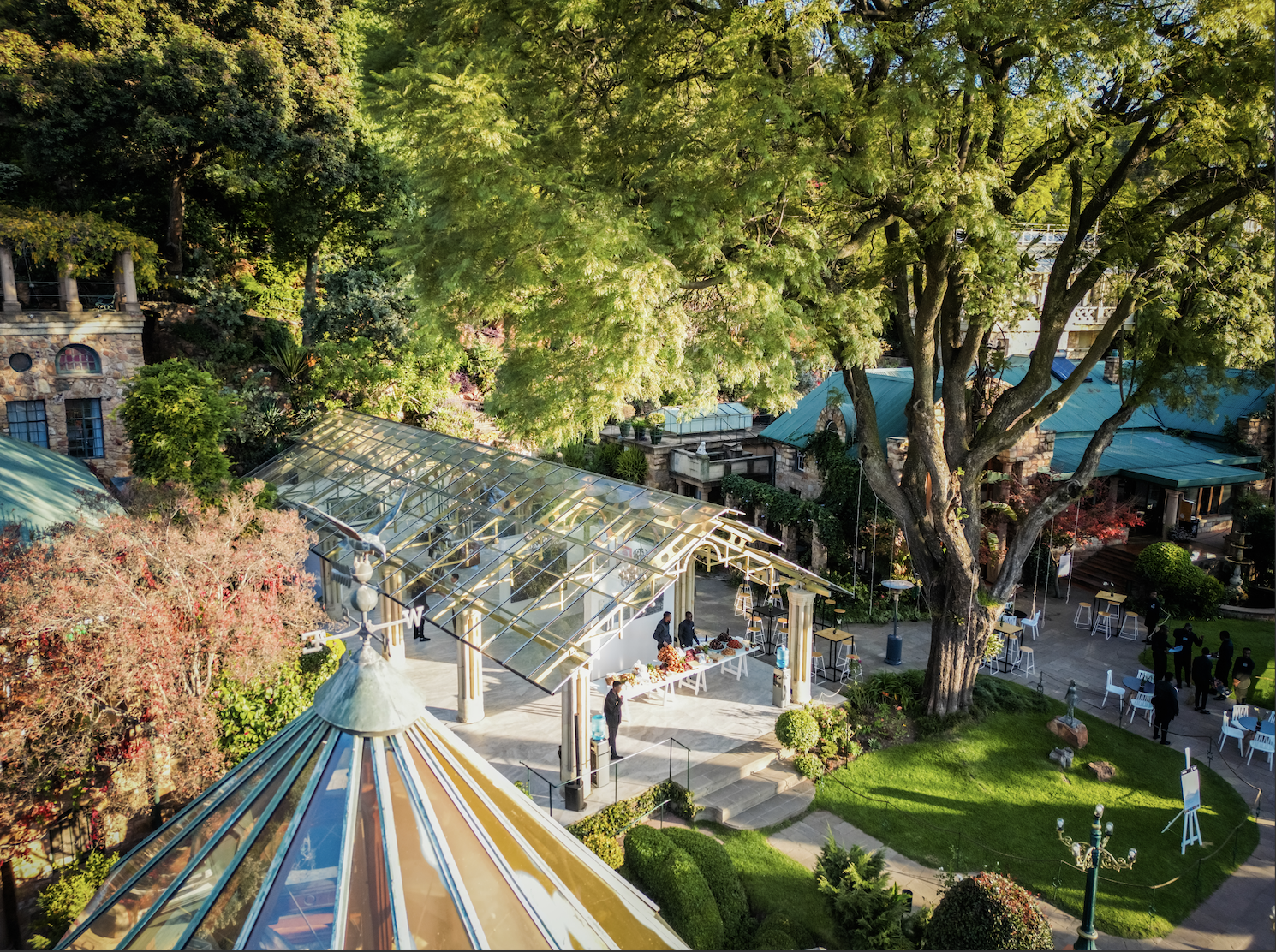People with things, things without people
- By Sean O’Toole

RMB Latitudes 2024 Featured Artist, Abdus Salaam, NIROX Residency, courtesy Nirox and THK Gallery, viewed here by Kay Kay Ribane
---------
The 2024 RMB Latitudes Art Fair will open to the public in late May with a strong sculptural component visible across all of Shepstone Gardens. I want to take this basic fact for a leisurely stroll. Things might briefly get abstract. Stay with me.
Now, more than ever, we engage artworks through their virtual proxies, as digital images that are always present, always available, always untouchable. Even sculpture, an insistently physical practice, has been made to yield to this evolutionary advance in human experience. Objects in the round are flattened and compressed into portable digital files. Something is lost. Let’s call it the thingness of things.
Just what is it that makes the thingness of things so different, so appealing? There is most likely a credible neuro-scientific explanation, something linked to our evolutionary use of tools, or perhaps it reflects our need to externalise spirituality, but I’m neither a scientist nor a philosopher, merely a littérateur. In 1953, the Irish playwright and poet Samuel Beckett published The Unnamable, the final instalment in a trilogy of difficult and hermetic novels told by single narrators. “What is the correct attitude to adopt towards things?” asks the narrator of The Unnamable. “And, to begin with, are they necessary? What a question!”
Indeed, what a question. Beckett – a lodestar to writers J.M. Coetzee and Damon Galgut, as well as artists William Kentridge and Colin Richards – doesn’t answer why things are necessary. Instead, he simply counsels, “If a thing turns up, for some reason or another, take it into consideration.” It is useful advice to bear in mind when negotiating the large sculptural component at the forthcoming edition of RMB Latitudes. Pause. Look. Take the thing, the actual made thing, into consideration.
 RMB Latitudes 2024 Featured Artist, Atang Tshikare, Semela, 2022, courtesy Everard Read Gallery
RMB Latitudes 2024 Featured Artist, Atang Tshikare, Semela, 2022, courtesy Everard Read Gallery
In choosing to foreground sculpture, the fair is acknowledging what is patent and obvious in the everyday experience of art in South Africa. Sculpture is thriving. Resolutely. Visibly. Differently. In the past few months, I’ve seen fascinating bronze, stone and wood sculptures by, among others, Lea Colombo, Gerhard Marx, Phillip “Boytchie” Newman, Kirstie Pietersen, Abdus Salaam, Inga Somdyala, Atang Tshikare and Anna van der Ploeg. And that’s just in this year, in Cape Town.
Making legible and knowable what is palpable and raw defines the role of the curator. It is also summarises the challenge that Lebo Kekana, founder of FEDE Arthouse, has agreed to take on as invited curator of Latitudes Live (Talks and Performances) at the fair. Kekana is an enigmatic shape shifter. A computer scientist by training, he now operates at the fluid intersection of art and design in a role combining the skills of artist, curator and gallery director. Over the past three years, as FEDE transformed from a solo-project to a nomadic gallery run by a trio of friends (Kekana, Nthabiseng Mofokeng, and Carol Khaas), and existing now as a curatorial platform, it has collaborated with various artists, including sculptors Ciara Dunsby and Douglas Gimberg.
It will be interesting to see how Kekana and the Latitudes team handle the sculptural component of the fair. It will unavoidably involve unflattening what is compressed by the internet, as well as allowing the thingness of sculpture to declare itself available for consideration across the various spaces – indoor and outdoor – at Shepstone Gardens. The unconventional setting, with its episodic layout and grandiloquent architectural pastiches, poses an explicit counterargument to the grid logic of most contemporary fairs.
But that is the big picture stuff. Curatorial ideas play out through specific things. The fair’s programming will include a substantial line-up of sculptural talent, including Abdus Salaam. His stacked work, Our Last Stone (2024), made from river boulders foraged in the Ceres region, was a major pause point at the recent Investec Cape Town Art Fair. Born in Cape Town but partly raised in Los Angeles, Salaam recently completed a residency at Nirox Foundation. Latitudes and THK Gallery will present a solo exhibition of new work made during his time at this sculpture park and artist’s retreat northwest of Johannesburg.

RMB Latitudes 2024 Featured Artist, Rina Stutzer, Stealing the Hole in the Sky, 2020, courtesy Everard Read Gallery
Over the years, Nirox has staged ambitious showcases exploring the role and prominence of sculpture in the story of contemporary art. Sculptural practice in South Africa is no longer reducible to bronze statues of animals and politicians of the old and new dispensations. The disruptions proposed by historical figures like Bruce Arnott, Edoardo Villa and Noria Mabasa – all past exhibitors at Nirox – opened the doors for the likes of Salaam and Nandipha Mntambo.
Mntambo will also show work at Shepstone Gardens, as part of an outdoor presentation of 20 or so works by nearly a dozen artists represented by Everard Read Gallery. Of the decision to present sculpture, Stephanie Le Roy, a curator with Everard Read, said the venue for the fair offered a strong prompt. “Shepstone Gardens provides a wonderful, almost other-worldly backdrop that seamlessly integrates art with nature, showcasing how sculpture can really shine outdoors.”
Nicci Bailey – whose 2023 solo exhibition with Everard Read, A Gentle Entanglement, included a moving suite of bronzes portraying fallen birds in various scales – will show a rose quartz sculpture of a dog. Rina Stutzer, who makes affecting bronzes of crows and magpies, will show a 2020 work depicting a raven bearing a gold ring – a reference to Matthias Corvinus, the Raven King of Hungary and Croatia. Other gallery artists with work at the fair include Deborah Bell, Gail Catlin, Norman Catherine, Guy Du Toit, Dylan Lewis, Brett Murray and Angus Taylor, who will show two of his archetypal human figures made from a composite of bronze and stone.
“We tend to overlook stone as abundant and everyday – slightly more or less special than what can be found in your garden or park nearby,” Taylor explains in a fascinating interview with artist Johan Thom that introduces his recent Swiss-published monograph, Mind Through Materials (2021). “The intrinsic value or narrative of a specific stone is lost on most viewers if left as is. Through years of working with stone or exhibiting found stone objects, I discovered that, when presented in a resembling shape of, for example, a donkey or human being, it helps to elevate stone as material in its own right.”

'Threads', an installation by RMB Latitudes 2024 Featured Architect, Kate Otten, Venice Architecture Biennale 2023, “The Laboratory of the Future”
Kekana is of the same opinion. Last year he produced a bench composed of a plank balanced on large, untreated rocks for an exhibition by painter Jeanne Gaigher. Kekana will reprise his interest in the disruptive potential of bespoke furniture in an exhibition context at Latitudes. He has invited Tanisha Neill, of Cape Town furniture design studio NISH, to create public seating informed by themes of scarcity and adaptive reuse drawn from the commons, in particular street corners or pavements.
Can a chair exceed its functionality and become art? Atang Tshikare’s presence on the global stage suggests an affirmative answer. In summary, Tshikare is interested in producing sensory fusions or crossovers that invoke his Tswana heritage. In 2022, he exhibited two lavishly embellished fauteuils (upholstered armchairs) in the exhibition Before Yesterday We Could Fly: An Afrofuturist Period Room at The Met Museum in New York. The retrofitted armchairs retained the form of their French ancestor, but included beaded and woven elements. Drawing on skills passed down from his grandmother, Tshikare additionally charred (partially burned and blackened) the wooden surfaces of the seating. Tshikare will show a work combining his interest in beading and bronze at the fair.
Tshikare’s interest in community – in “exchanging information from the lips of knowledge to the ears of inexperience,” as he once phrased it – similarly informs architect Kate Otten’s contribution to the fair. Latitudes will present Otten’s two-part sculptural installation threads (2023). The installation encompasses a hanging disc showing an impressionistic map of the Vredefort Dome rendered in mohair. A team of weavers at Frances V.H Mohair, a bespoke design firm located in the Karoo town of Price Albert, produced the work using a circular loom designed by Otten.
 RMB Latitudes Art Fair, Shepstone Gardens, Johannesburg
RMB Latitudes Art Fair, Shepstone Gardens, Johannesburg
“We agreed to the project for many reasons, but mainly because of Katriena Kammies,” wrote designer Frances van Hasselt in an Instagram post last year, shortly before Otten’s collaborative sculpture appeared in Ghanaian curator Lesley Lokko’s much-debated central exhibition at the 2023 Venice Biennale of architecture. One of the first weavers in Prince Albert, Kammies has been practising her craft for over 50 years. “We said yes to this project, because she is a master of her craft and believed strongly that her work should be seen and celebrated on one of the most important platform of makers.”
Facility, the ability to do something well, and virtuosity, the exhibition of great skill, remain strong attributes linking the diverse strands of South African sculpture. Notwithstanding a longstanding impulse to simplify and deskill, to work with found things rather than made things, the need to shape encounters with resonant materials endures. While wandering through Shepstone Gardens in May, if an unexpected thing turns up, take it into consideration. Explore it in the round. Think of the many hands that contributed to its production. And consider Beckett’s riddle, posed as a question, “People with things, people without things, things without people, what does it matter?” A lot. Things matter.
Further Reading In Articles
African Artist Directory















